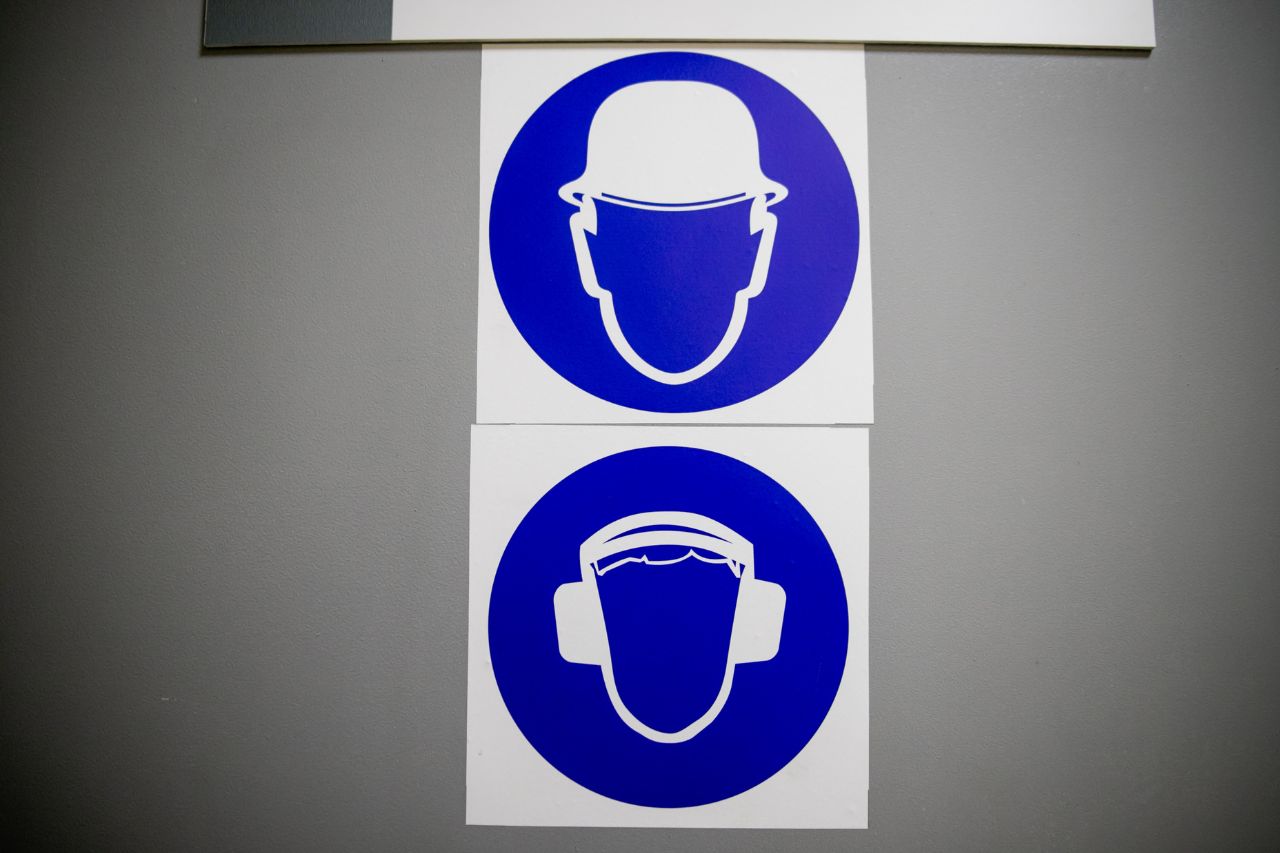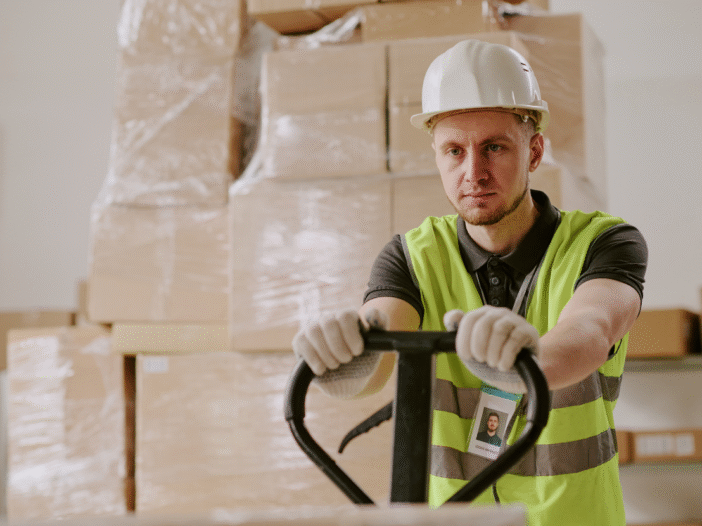
By implementing robust health and safety procedures and fostering a proactive safety culture, your organisation can significantly reduce workplace injuries and illnesses. Here we explore how to improve health and safety in the workplace and why it is important.
Why is health and safety important?
Here are four key reasons why health and safety is important:
Preventing injuries and illness
The Health and Safety Executive (HSE) reported that in 2023/2024, 138 workers were killed at work in the UK, and 87 members of the public were killed in work-related incidents. This highlights the critical importance of workplace health and safety measures.
Implementing proper health and safety measures significantly reduces the likelihood of workplace accidents, injuries, and illnesses. Hazards such as slips, trips, machinery malfunctions, or exposure to harmful substances can cause severe harm to employees if not addressed.
Proactively managing these risks ensures employees can work safely and reduces the human and financial costs associated with workplace incidents.
Compliance with the law
Health and safety regulations, such as the Health and Safety at Work Act 1974, place a legal obligation on employers to ensure a safe working environment. Failure to comply can result in hefty fines, legal penalties, and reputational damage, which can affect future business opportunities.
By prioritising compliance, organisations demonstrate their commitment to protecting their workforce and adhering to societal standards.
Employee wellbeing
A workplace that prioritises health and safety fosters a positive environment where employees feel valued and protected.
This commitment enhances morale and productivity while reducing absenteeism caused by work-related injuries or stress. Employees who feel safe are more likely to remain loyal to the organisation, improving retention rates and creating a more motivated workforce.
Protecting business operations
Workplace risks can disrupt business operations, leading to costly downtime, damaged equipment, and lost revenue. Workplace injuries and ill health cost UK employers around £3.9 billion annually.
Preventing accidents and ensuring robust health and safety measures safeguards assets and maintains continuity. A safe workplace also helps build trust with clients and stakeholders, further securing the organisation’s reputation and long-term success.
How to improve health and safety in the workplace
Improving workplace health and safety requires a structured approach, incorporating regular evaluations, training, and fostering a positive health and safety culture. Here is how to improve health and safety in the workplace:
1. Implement a comprehensive health and safety programme
A structured health and safety programme is the foundation for a safer workplace. Key elements include:
Behavioural change
Behavioural change is key to improving health and safety in the workplace. Encouraging positive habits and addressing unsafe practices help employees develop a safety-first mindset. This involves reinforcing safe behaviour through training and feedback while addressing risky actions to prevent accidents.
Long-term improvement depends on embedding these habits into the workplace culture, making safety a shared responsibility.
To learn more about how behaviour impacts safety, please read our article Understanding behavioural safety and its importance in the workplace. At Praxis42, we also offer Behavioural Safety Training.
Hazard identification
Proactively identifying and addressing hazards is a cornerstone of any health and safety programme. Regular workplace reviews, inspections, and risk assessments help identify potential dangers before they result in incidents.
By consistently monitoring for risks, organisations can implement corrective measures early, reducing the likelihood of accidents and maintaining a safer environment for everyone.
Accessible training
Effective health and safety training empowers employees with the knowledge and skills they need to maintain a safe workplace.
Accessible training ensures that all employees, regardless of role or location, can stay informed about best practices and compliance requirements. For example, our Health and Safety Induction Course equips new employees with essential knowledge on hazard identification and risk management, ensuring a consistent understanding of safety protocols across the organisation.
Our eLearning courses enable employees to learn at their own pace, making it easier to maintain high safety standards throughout your team.
2. Regularly inspect and update your health and safety policy
Having a health and safety policy is not enough to guarantee the safety and wellbeing of employees. To improve its effectiveness, it is important to commit to carrying out regular risk assessments to identify any gaps in the current policy or areas that would benefit from improvement.
Workplace conditions can evolve due to factors such as new equipment, updated premises, or changes in staffing levels. As these changes occur, health and safety procedures and policies must be updated to reflect the current environment. By evaluating risks consistently, timely corrective actions can be implemented and improvements made to safety practices at work, reducing the likelihood of accidents and ensuring compliance with health and safety legislation.
Employee feedback is a valuable resource for improving health and safety policies. Workers are often the first to notice risks or inefficiencies in existing procedures, so creating a platform for them to share insights can help you address issues more effectively. Involving employees in the process also fosters a sense of ownership over workplace safety, contributing to a more engaged and proactive workforce.
3. Invest in training
Training is one of the most effective ways to improve health and safety in the workplace, and it is also the statutory duty of all employers under The Health and Safety at Work Act 1974.
No matter the nature of a business, all employees must be trained in the workplace health and safety areas relevant to their role. If an organisation frequently uses contractors, it is also the employer’s responsibility to ensure that they are properly trained too.
These are the options for health and safety training:
- Classroom training. Traditional training sessions are effective for hands-on demonstrations and direct engagement.
- eLearning programmes. Cost-effective and flexible, online training allows employees to learn at their own pace, making it an increasingly popular choice.
Our IOSH-Approved Health and Safety Awareness Training provides employees with essential knowledge to work safely. Delivered online, it is designed to meet the diverse needs of organisations, ensuring compliance while promoting a safe working environment.
Improving health and Safety culture
Building a strong health and safety culture goes beyond policies and workplace health and safety procedures. It requires:
- Leadership commitment. Leaders should model safe behaviour and prioritise safety in decision-making.
- Employee engagement. Involve employees in health and safety discussions and encourage them to report hazards or near-misses.
- Recognition and rewards. Acknowledge employees who contribute to improving workplace safety.
By embedding health and safety into your organisation’s culture, you can create a proactive environment where everyone takes ownership of their wellbeing.
For more detailed guidance about how to improve health and safety culture, please read our article, How to create a positive health and safety culture – a manager’s guide.
How Praxis42 can help improve health and safety in your workplace
At Praxis42, we understand that no two workplaces are the same. Our tailored solutions are designed to address your specific health and safety needs, whether that involves bespoke training programmes or ongoing support to maintain compliance.
We can offer you:
- Expert advice. Our experienced fire, health and safety consultants can guide you through developing and implementing effective health and safety strategies and discuss how to improve health and safety in the workplace.
- Health and safety training. Our IOSH-Approved and CPD-Certified health and safety courses provide employees with the knowledge to work safely, and we offer bespoke options where we tailor courses to your particular organisation.
- SHINE learning management system. Track training progress and ensure compliance with ease using our intuitive SHINE LMS.
Improving health and safety in the workplace is a continuous process, but with the right tools and commitment, you can create a safer, more productive environment. To learn more about how we can help, contact out friendly team today on 0203 011 4242/info@praxis42.com

Adam Clarke
Managing Director (Consulting)
